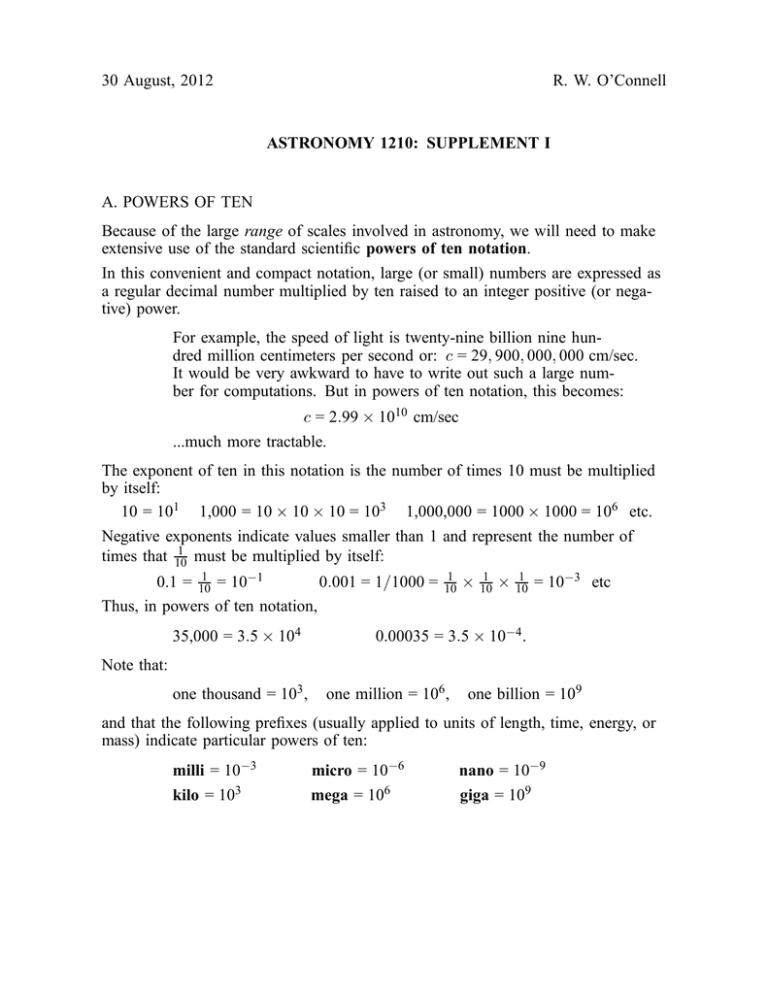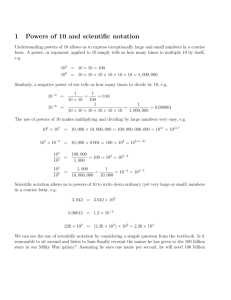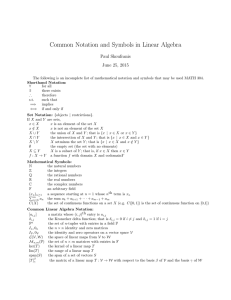30 August, 2012 R. W. O’Connell A. POWERS OF TEN range
advertisement

30 August, 2012 R. W. O’Connell ASTRONOMY 1210: SUPPLEMENT I A. POWERS OF TEN Because of the large range of scales involved in astronomy, we will need to make extensive use of the standard scientific powers of ten notation. In this convenient and compact notation, large (or small) numbers are expressed as a regular decimal number multiplied by ten raised to an integer positive (or negative) power. For example, the speed of light is twenty-nine billion nine hundred million centimeters per second or: c = 29, 900, 000, 000 cm/sec. It would be very awkward to have to write out such a large number for computations. But in powers of ten notation, this becomes: c = 2.99 × 1010 cm/sec ...much more tractable. The exponent of ten in this notation is the number of times 10 must be multiplied by itself: 10 = 101 1,000 = 10 × 10 × 10 = 103 1,000,000 = 1000 × 1000 = 106 etc. Negative exponents indicate values smaller than 1 and represent the number of 1 must be multiplied by itself: times that 10 1 = 10−1 0.001 = 1/1000 = 0.1 = 10 Thus, in powers of ten notation, 35,000 = 3.5 × 104 1 10 × 1 10 × 1 10 = 10−3 etc 0.00035 = 3.5 × 10−4 . Note that: one thousand = 103 , one million = 106, one billion = 109 and that the following prefixes (usually applied to units of length, time, energy, or mass) indicate particular powers of ten: milli = 10−3 micro = 10−6 nano = 10−9 kilo = 103 mega = 106 giga = 109 30 August, 2012 Page 2 B. SPECIAL SYMBOLS Astronomy is an “order of magnitude” science. That is, we often cannot measure quantities of interest to better than a factor of ten in accuracy. For this reason, the “approximate” symbol (≈ or ∼) is used more often than the “equals sign”: x ≈ 20 means “x is approximately equal to 20”. Other mathematical symbols we will occasionally use as shorthand include: < “is less than” > “is greater than” wrt “with respect to" ⇒ “implies” ⇑ “increases" ⇓ “decreases" ∃ “there is" @ "at" Examples: L ⇑ ⇒ T ⇓ means “if L increases then T decreases" @ 1200◦, x > y means “at 1200 degrees, x is greater than y". Some astronomical symbols: ⊙ stands for the Sun L stands for the Earth Commonly used symbols for other quantities: n for neutron p for proton e or e− for electron c for speed of light λ for wavelength of electromagnetic wave ν for frequency of electromagnetic wave




